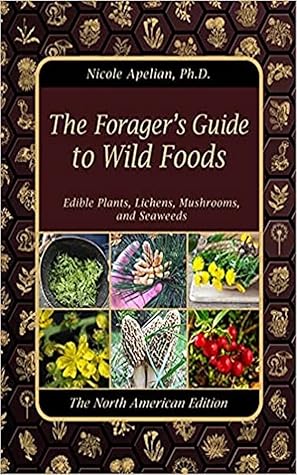A Forager's Guide: Identifying And Roasting The Carrot's Wild Cousin

Table of Contents
Embark on a culinary adventure with this forager's guide to the wild carrot, the surprisingly delicious ancestor of the common carrot. Discover how to identify this versatile wild plant and unlock its unique flavor through simple roasting. This guide will cover identifying wild carrots, safe foraging practices, harvesting techniques, and a simple roasting recipe, equipping you to confidently enjoy this wild edible. We'll also explore other wild carrot recipes and uses beyond roasting.
<h2>Identifying the Wild Carrot (Daucus carota)</h2>
Before you begin foraging, accurate identification is paramount. Mistaking the wild carrot for a poisonous plant can have serious consequences. This section will focus on identifying wild carrots and differentiating them from potentially harmful look-alikes.
<h3>Distinguishing Features of Wild Carrots</h3>
The wild carrot, Daucus carota, boasts several distinct features. Its morphology is crucial for correct identification. Look for:
- Delicate, finely divided leaves: These lacy, fern-like leaves are characteristic of the wild carrot and are quite different from the broader leaves of cultivated carrots.
- White, lacy umbels of flowers: The small white flowers are arranged in a flat-topped cluster, known as an umbel. This is a key identifying feature.
- Often a single dark red or purple flower in the center of the umbel: This dark central flower is a helpful distinguishing mark, although not always present.
- Hairy stems and leaves: The stems and leaves of the wild carrot are often covered in fine hairs.
- Strong carrot-like scent when crushed: Crushing a leaf will release a distinctive carrot-like aroma.
<br>
(Insert image of wild carrot plant showing leaves, flowers, and root here)
<br>
Important Note: Several poisonous plants, such as Poison Hemlock (Conium maculatum), can resemble the wild carrot. Poison Hemlock has smooth, purple-spotted stems, and its flower umbel lacks the characteristic dark purple center flower. Never consume a plant unless you are 100% certain of its identity. When in doubt, leave it out! Consult multiple reliable sources and, if uncertain, seek expert advice from a knowledgeable forager or botanist before consuming any wild plant.
<h3>Safe Foraging Practices for Wild Carrots</h3>
Responsible foraging is essential for preserving wild plant populations and ensuring your safety. Always adhere to these practices:
- Only harvest plants you can confidently identify. Double-check your identification using multiple reliable resources.
- Obtain permission from landowners before foraging on private property. Trespassing can lead to legal consequences.
- Harvest sustainably – leave plenty of plants for reproduction and other foragers. This ensures the long-term sustainability of wild carrot populations.
- Use a clean digging tool to minimize soil disturbance. A trowel or small garden fork is ideal.
<h2>Harvesting and Preparing the Wild Carrot Root</h2>
Once you've identified wild carrots, the next step is careful harvesting and preparation.
<h3>Harvesting Techniques for Wild Carrots</h3>
The optimal time to harvest wild carrot roots is late summer or early fall, after the plant has flowered and the root has had time to fully develop.
- Use a trowel or small garden fork to gently unearth the root. Avoid damaging the root during extraction.
- Avoid damaging the root during extraction. A damaged root is more susceptible to spoilage.
- Clean the soil off the root with a brush or water. A gentle scrubbing will remove most of the clinging soil.
<h3>Cleaning and Prepping Wild Carrots for Roasting</h3>
Before roasting, thorough cleaning is necessary.
- Thoroughly wash the root under running water. This removes any remaining soil and debris.
- Scrub off any remaining soil with a brush. A vegetable brush is ideal for this task.
- Trim off any damaged or bruised parts of the root. This improves the overall quality and appearance of the roasted carrots.
<h2>Roasting Wild Carrots: A Simple Recipe</h2>
This simple recipe showcases the wild carrot's delicious flavor.
<h3>Ingredients and Equipment for Roasting Wild Carrots</h3>
-
1 pound wild carrot roots, cleaned and trimmed
-
2 tablespoons olive oil
-
Salt and pepper to taste
-
Optional: Fresh herbs such as rosemary or thyme
-
Oven
-
Baking sheet
-
Bowl
<h3>Step-by-Step Instructions for Roasting Wild Carrots</h3>
- Preheat oven to 400°F (200°C).
- Toss wild carrots with olive oil, salt, and pepper in a bowl. Add herbs if desired.
- Spread the carrots in a single layer on a baking sheet.
- Roast for 20-30 minutes, or until tender and slightly browned, flipping halfway through.
<h2>Wild Carrot Recipes and Uses</h2>
<h3>Beyond Roasting: Exploring Wild Carrot Uses</h3>
While roasting is a fantastic way to enjoy wild carrots, their versatility extends far beyond this simple method.
- Use in soups and stews for a subtly sweet and earthy flavor. The carrots add depth and complexity to these dishes.
- Add to salads for a unique textural element. The slightly crunchy texture complements other salad ingredients.
- Use as a garnish for roasted meats or vegetables. Their vibrant color and delicate flavor make them an attractive garnish.
<h2>Conclusion</h2>
This forager's guide provides a comprehensive overview of identifying, harvesting, and preparing the delicious wild carrot. Remember to always prioritize safe foraging practices and accurate plant identification before consumption. By following these simple steps, you can enjoy the unique flavor and culinary versatility of this wild edible. So grab your foraging basket and embark on your wild carrot adventure! Learn more about identifying and using other wild edibles by following our blog for future forager's guides. Happy foraging!

Featured Posts
-
 Raducanus Powerful Performance Secures Last 16 Spot In Miami
May 30, 2025
Raducanus Powerful Performance Secures Last 16 Spot In Miami
May 30, 2025 -
 Plires Programma Tileoptikon Metadoseon 23 4
May 30, 2025
Plires Programma Tileoptikon Metadoseon 23 4
May 30, 2025 -
 Orden Ejecutiva De Trump El Fin De La Reventa De Boletos En Ticketmaster
May 30, 2025
Orden Ejecutiva De Trump El Fin De La Reventa De Boletos En Ticketmaster
May 30, 2025 -
 Inilah Kawasaki Vulcan S 2025 Desain Futuristik Untuk Pengendara Indonesia
May 30, 2025
Inilah Kawasaki Vulcan S 2025 Desain Futuristik Untuk Pengendara Indonesia
May 30, 2025 -
 Manchester United E Arsenal Empate Em Jogo Com Muitos Gols
May 30, 2025
Manchester United E Arsenal Empate Em Jogo Com Muitos Gols
May 30, 2025
Latest Posts
-
 Best Spring Hotel Deals Up To 30 Discount
May 31, 2025
Best Spring Hotel Deals Up To 30 Discount
May 31, 2025 -
 Responsible Ai Acknowledging The Limits Of Current Ai Learning Capabilities
May 31, 2025
Responsible Ai Acknowledging The Limits Of Current Ai Learning Capabilities
May 31, 2025 -
 Ai And The Illusion Of Learning A Call For Responsible Ai Use
May 31, 2025
Ai And The Illusion Of Learning A Call For Responsible Ai Use
May 31, 2025 -
 The Reality Of Ai Learning Addressing Misconceptions And Promoting Responsible Use
May 31, 2025
The Reality Of Ai Learning Addressing Misconceptions And Promoting Responsible Use
May 31, 2025 -
 The Reality Of Ai Learning Promoting Responsible Ai Practices
May 31, 2025
The Reality Of Ai Learning Promoting Responsible Ai Practices
May 31, 2025
